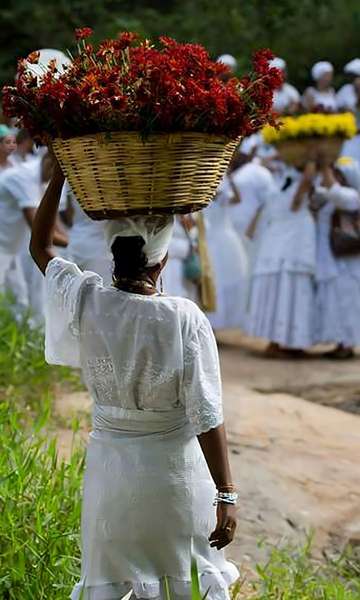Although they are distinct territories, both need to go through a process of identification and delimitation to be demarcated
Summary
Indigenous lands and quilombola lands are territories traditionally occupied by distinct groups, whose demarcations are guaranteed by the 1988 Constitution. These territories are fundamental for the preservation of languages, traditions and identities, as well as human rights and for the maintenance of traditional agricultural practices of each community. .
Indigenous lands and quilombola lands are categories of territories traditionally occupied by specific communities, each with its own characteristics and recognitions. Although both types of territory are related to the protection of the territorial rights of cultural and ethnic groups, there are significant differences in their definitions and demarcation processes.
Indigenous lands
Indigenous lands are occupied by indigenous people. The recognition of these lands is guaranteed by the Federal Constitution of 1988, which guarantees original peoples the right to delimit their lands, as provided for in Article 231.
The delimitation of indigenous lands is a complex administrative process, coordinated by the National Foundation of Indigenous Peoples (Funai), which involves identification, delimitation, declaration, physical demarcation, approval and registration.
-t8431x91xa2g.png)
Understand the process of demarcation of indigenous lands
Quilombola disembarks
The lands of Quilombola are inhabited by communities made up of remnants and descendants of people enslaved in Brazil. Article 68 of the 1988 Federal Constitution recognizes the community’s right to land. The legal text says: “the remaining quilombo communities that occupy their lands are recognized as definitive owners and the State must issue them their respective titles.”
In order for these territories to be recognized, the groups must undergo an assessment conducted by the National Institute of Colonization and Agrarian Reform (Incra). This process involves, among other steps, the quilombola’s self-definition, delimitation identification relationship, and recognition.
Both communities need to go through a process of identification and delimitation of the territory. This involves a multidisciplinary study that also considers historical, anthropological and geographical aspects.

Quilombola Community: do you know what they are?
Constitution of 1988
The 1988 Constitution represented progress by establishing an exclusive chapter to protect the rights of indigenous peoples, in Chapter VIII. Furthermore, it was the first constitution to legally guarantee the rights of quilombolas to the conservation of their lands and communities.
Furthermore, the Constitution establishes all fundamental rights for indigenous and quilombola peoples, covering, among others, access to education, health, freedom, cultural and social rights.
Importance
The preservation of indigenous and quilombola lands is essential to preserving the cultures, traditions and identities of these communities. They are spaces where their languages, practices and knowledge can be preserved and passed on to future generations. It is also a way to contribute to social justice and the promotion of human rights, as it recognizes and respects the territorial and cultural rights of these historically marginalized peoples.
Furthermore, these spaces are vital for productive activities, such as planting food to support communities. By ensuring the conservation of these lands, the continuity of these traditional agricultural practices is ensured, also contributing to the maintenance and protection of environmental resources.
Source: Terra
Rose James is a Gossipify movie and series reviewer known for her in-depth analysis and unique perspective on the latest releases. With a background in film studies, she provides engaging and informative reviews, and keeps readers up to date with industry trends and emerging talents.

-s4mapi0lq543.png)




